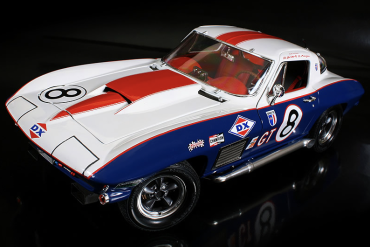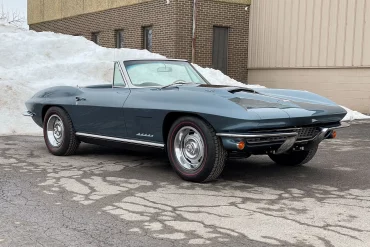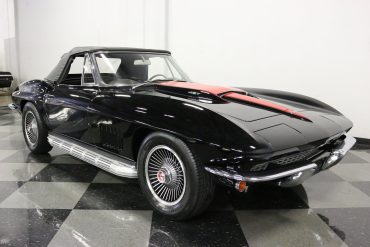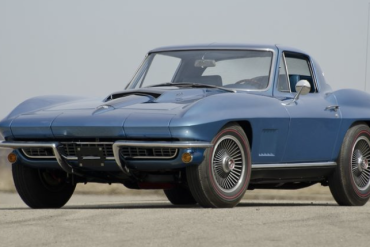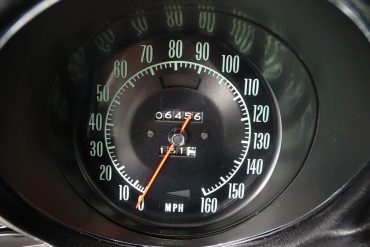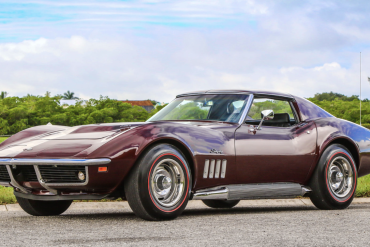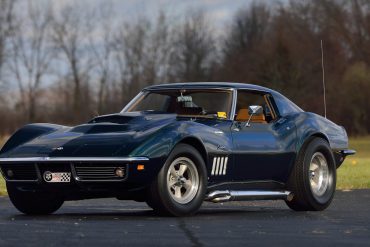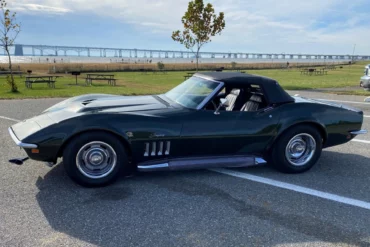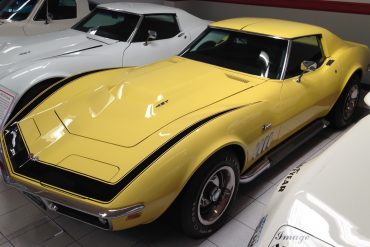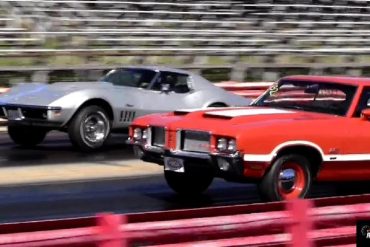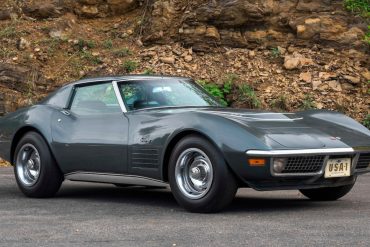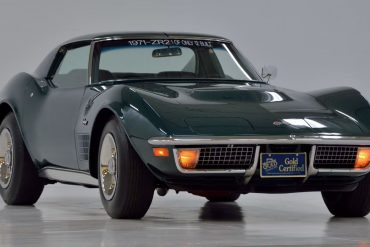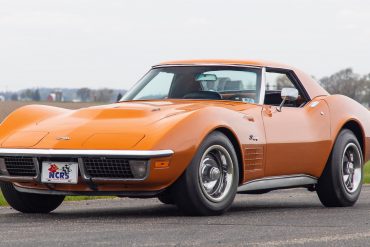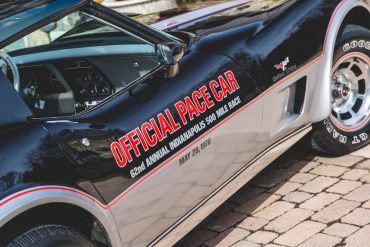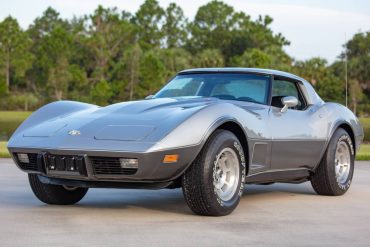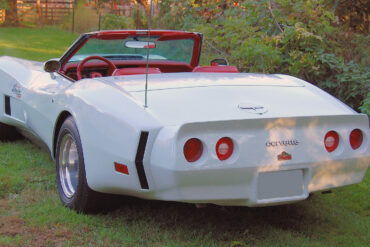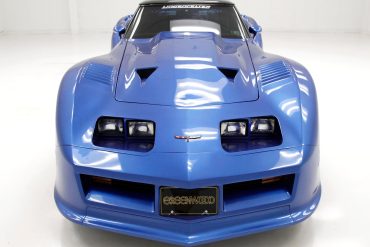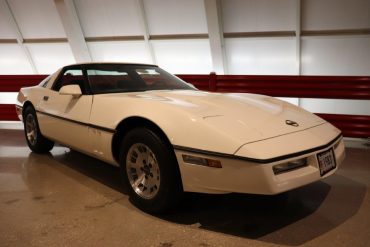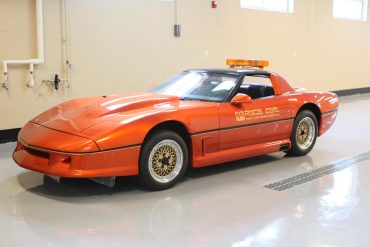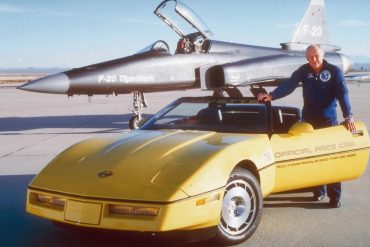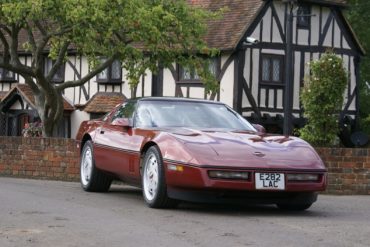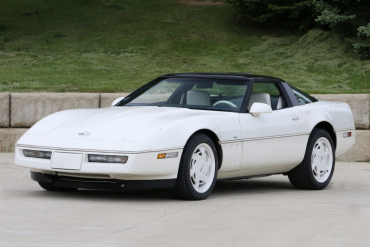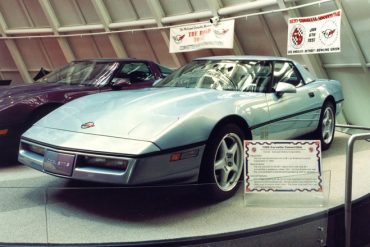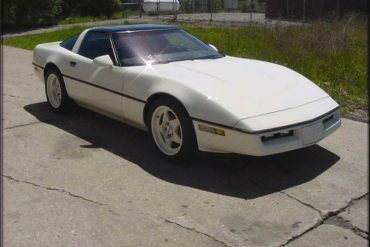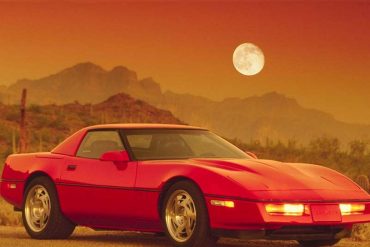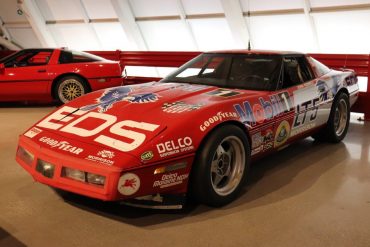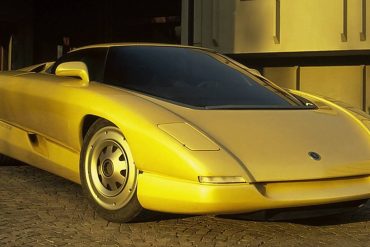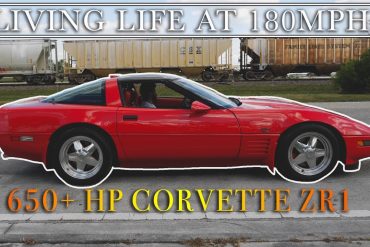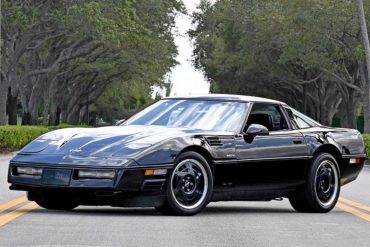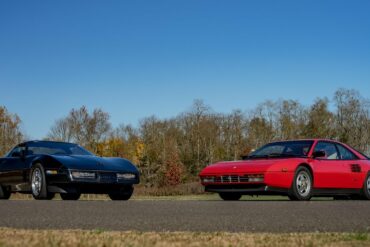At Sebring in 1967, the Corvette L88 made its debut appearance. The L88 package included many competition components which included a M22 transmission, large disc brakes, upgraded suspension and an alumunim head 427. Shortly after the race, the L88 option would be offered on production cars which was a formidable package.
Special Series Models
These Big Block cars would be the high-water mark of Corvette performance and refinement for the C2 series of cars. The 427/400hp L68 came standard from the factory with the Holley triple two-barrel carburetor arrangement called Tri-Power. Only 2101 Corvettes in 1967 received this rare engine option which was a $305.50 cost.
The L71 was Chevrolet’s most powerful engine in 1967 which replaced the big-block L71 from the previous year. Using it’s famous ‘Tri Power’ intake manifold was rated by the factory at 435 bhp. Costing $437.10, 3,754 Corvettes were made with the L71 options and they could not come with automatic transmissions nor air conditioning.
1967 Chevrolet Corvette Sting Ray L89 Tri-Power There were 16 of the 1967 RPO L89 Corvettes manufactured by Chevrolet, thus...
Automotive history is full of outlandish tales and shenanigans, many of which would be hard to believe if the fine...
Power and blinding acceleration were the driving forces behind the development of the 1968-1969 Chevrolet Corvette 427. Only 390 1969 Corvettes were built with the famous L89 427 and while the L89 option was chosen 624 times in 1968, it is still a rare beast relative to total production. The 427 CI engine was good for 435 HP and a strong 460 lb-ft of torque making it one of the best-accelerating cars of its time.
Various upgrade packages were offered by Motion Industries, for the Chevrolet models included within the Baldwin Corvette partnership. The most prominent of these packages included the SS (425 HP) and Phase III (500+ HP) offerings. These cars not only came with a performance promise, but a guarantee to back it up. All Phase III cars came with a personal guarantee.
The 1969 Chevrolet Corvette Convertible was sold new by Northcutt Chevrolet in Enid, Oklahoma. Through the years, it has spent...
In 1969, Chevrolet changed the perception of Corvette forever by introducing the ultra-powerful ZL-1 Corvette with a 427 CI engine producing 585 horsepower! The 1969 ZL-1 Corvette came equipped with an entirely new big-block engine option that produced more horsepower than any Corvette that had come before it. Any Corvette, when ordered with RPO ZL1, came fitted with an all-aluminum 427 C.I. engine that featured a dry-sump oil system and which weight approximately 100 pounds less.
In today’s video courtesy of Road Test TV, we get to witness a vintage quarter-mile drag between two examples of...
Did you know that the earliest ZR1 Corvettes came into existence long before any of these later iterations? If not, then take a few minutes to acquaint yourself with one the rarest small-block production Corvettes of all time - the 1970-1972 Corvette ZR1. From 1970 to 1972, Chevrolet offered the ZR1 Special Engine Package, which featured a small-block LT1 engine.
Don’t miss the chance to own a rare 1971 Corvette ZR2 coupe, one of only 12 ever built and believed...
Finally in 1971, both the ZR1 and ZR2 packages were offered side by side as initially intended. The solid lifter, 350 cubic-inch LT-1 found under the hood of the ZR1 featured a ‘178’ high-performance camshaft and a 780 CFM Holley four-barrel carburetor, which resided atop a specialized aluminum intake. The LT-1 featured a reduced compression ratio of 9.0:1 for the 1971 production year, relative to 11.0:1 specified the year prior.
1978 was significant because it marked the cars 25th anniversary of production. Recognizing the achievement of manufacturing a car for a quarter-century, Chevrolet commemorated this accomplishment by introducing two special-edition Corvette that year. The first of these was known as the "Silver Anniversary" edition Corvette. It featured a two-tone silver over gray exterior with special pin-striping and special "25th Anniversary" badging.
The 1978 Silver Anniversary Edition Corvette was developed to offer consumers a “collectible” model that commemorated one of Corvette’s milestone production anniversaries (its twenty-fifth anniversary in this case) in a way that had ever been done previously with any Corvette model year that had come before it. The car was mechanically identical to 1978 counterparts.
The Duntov Turbo was built as a partnership between American Custom Industries (ACI), a company known for building replacement Corvette body panels, and Zora Arkus-Duntov. It was developed as a highly-stylized convertible sports car based on the production model Corvette. Each of the special Duntov Turbo's also came with a turbocharged V8.
What you see before you is a 1982 Chevrolet Corvette that has been fitted with a rare Greenwood Daytona body kit. The most extreme of the Greenwood brothers' kits, the Daytona body kit is a highly sought-after modification that was developed by race-winning specialists Burt and John Greenwood.
Within the National Corvette Museum's Skydome sits the only remaining 1983 Corvette; a car best characterized as a survivor, in every sense of the word. According to the Macmillan Dictionary, a survivor is, "someone or something that still exists after every other member of a group has died or been destroyed." This as it may, the 1983 Corvette lives up to this title.
The 1984 PPG Indy Pace Car Corvette was special from the very beginning- in several ways. Initially, it was created as a one-off concept car that would be designated as one of the official Pace Cars for the PPG Indy Car World Series of races. It was custom-built by PPG in cooperation with the Chevrolet Division of General Motors. The 205 HP 350 was replaced by a 450hp, 401 cubic-inch V-8.
The big news for 1986 was that a Corvette would pace the Indy 500 for the second time. Retired General Chuck Yeager was enjoying celebrity status as a result of the book and movie, “The Right Stuff.” But Chevrolet was still smarting from the heavy criticism over the ‘78 Corvette Pace Car debacle and decided that all 1986 Corvette convertibles were designated as “Pace Car Replica”.
This is no ordinary C4 coupe, but a GM Engineering test mule with VIN plate EX4607 proudly displayed in the windscreen, built in 1986 to test all the new-for-1988 features. This actual car must have spent weeks pounding round the General Motors Proving Ground at Milford, Michigan with longer runs on the road, testing all the changes for a year which saw the C4 suspension, steering and brakes vastly improved.
While not exactly a "collector's edition" Corvette in its own right, it nonetheless has become a uniquely identifiable and collectible Corvette from the fourth-generation era. 1988 marked the 35th anniversary for Corvette, and so it was decided that Chevrolet should commemorate the milestone by introducing an anniversary-edition model. This anniversary car was the first of its kind in a decade, given that Chevrolet opted not to manufacture a Corvette in 1983.
There were several successful attempts to build a convertible ZR-1, most of them by private people. The DR-1 was a GM prototype to test the structural integrity of the ZR-1 chassis when it would be topless. The car was built by American Sunroof Corporation (ASC) for Don Runkle, who was the vice-president of Advanced Engineering Staff, which explains the “DR-1” designation. It was a standard convertible transformed to ZR-1 specs.
In the late 80s, Chevy was developing what some dubbed a ‘Super Vette.’ But the 1989 debut of the Dodge Viper sent GM engineers on a new path to develop a ‘Viper-Killer.’ It started with a factory test mule and the experiment was to see how a ZR-1 would perform if given more power and less weight. It was so fast it was called "Snake Skinnner", for it's ability to beat the Viper and Cobra.
How do you beat a slew of Fox-Body 5.0 Mustangs that seemingly dominated the roads in the late '80s? You take a 454 cu.-in. big-block engine and stuff into a C4 Corvette and call it "Big Doggie". An experimental vehicle used to determine how to convert from a small block to a big block. Its 454 big block V8 along with its orange paint make this high horsepower engineering study a one-of-a-kind standout in Corvette history. The car had as much HP as the '90 ZR-1 did and it was named "ZR-2" or "Big Doggie". Old dog, new tricks joke?
On March 1-2 1990 a unique group of people using a Chevrolet Corvette ZR-1, reset The 24-hour World Speed Record. That achievement proved unequivocally that the car is indeed...King of the Hill. "The 24" had stood for 50 years. Last set at Bonneville in 1940 by AP Jenkins driving the "Mormon Meteor Ill", a purpose-built. single-seat race car with an aircraft engine. The objectives: set the 24 as well as 5000 kilometer and the 5000 mile marks with a ZR-1 while using an L98-powered Corvette to set the six-hour record and other shorter distance marks.
The Nivola may be considered Bertone’s homage to the most fascinating American sports car: the Chevrolet Corvette. The sophisticated mechanical unit of the ZR-1 was interpreted by Bertone in a European key. Bertone designed a special chassis to make a sporty "boat" with a mid engine. This mechanical layout made it possible to exploit all the power of the engine when accelerating and warrant perfect roadholding on bends.
Exclusive look at 1990 Chevrolet Corvette ZR1 that can pump out 655 horsepower!...
This vehicle pioneered the advantages of “Active Suspension” and had GTP Corvette race car technology. Built at the Bowling Green Plant, this vehicle was developed as a prototype for a limited edition run in the 1990 model year. Chevrolet ordered it to be built with a complex, high-tech active suspension that includes an Eaton hydraulic pump and Moog actuators. This car and the technology inside of it led to the Active Handling system GM released in 1996.
Two owners compare these two iconic sports cars. Which one do you like the most?...


